|
Blank Map of Europe
(click here for the jpeg
file)
Languages of Europe
Religions of Europe
Ethnicities of Europe
Europe prior to
the French Revolution (1789)
Europe after the
Congress of Vienna (1815)
|
|
 |
Napoleon's Empire; by 1812
Napoleon directly ruled or controlled most of Europe |
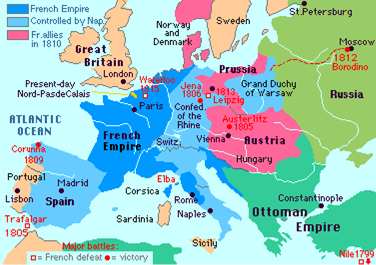 |
Napoleon's Empire; similar
to the map above (slightly different projection) |
 |
France, 1815; in
determining the borders of France, European heads of state were torn
between the need to punish and control France, and the importance of
reconciliation with France for a stable Europe. The Second Peace
of Paris of November 1815 permitted France to return to the borders of
1790 and to resume its role as one of the Great Powers of Europe. |
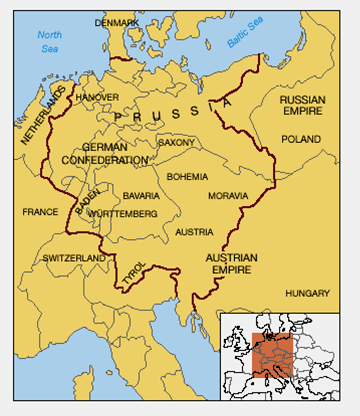 |
German Confederation; the
League of German states created in 1815 replaced the Holy Roman Empire.
The 39 states, of which 35 were monarchies and 4 were free cities,
existed to ensure the independence of its member states and support in
case of external attack (e.g., France). The member states of
Austria and Prussia lay partially outside the Confederation. |
 |
Poland, 1815; an
independent kingdom in name only, Poland (most of which was formerly the
Grand Duchy of Warsaw under Napoleon) was under the influence of Russia.
Prussia carved off Posen, and Austria maintained control of Galacia.
Krakow was defined by treaty as an independent republic. |
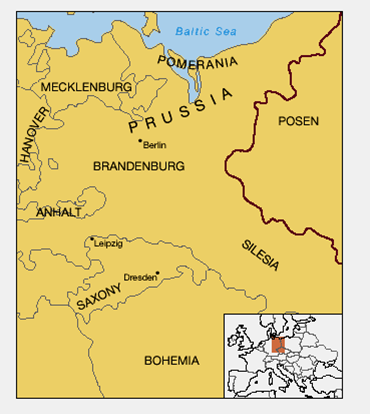 |
Saxony, 1815; in 1806,
Saxony had sided with France against Prussia and remained allies with
the French for the remainder of the wars. With Napoleon's defeat
in 1815, about 40% of Saxony became part of Prussia. |
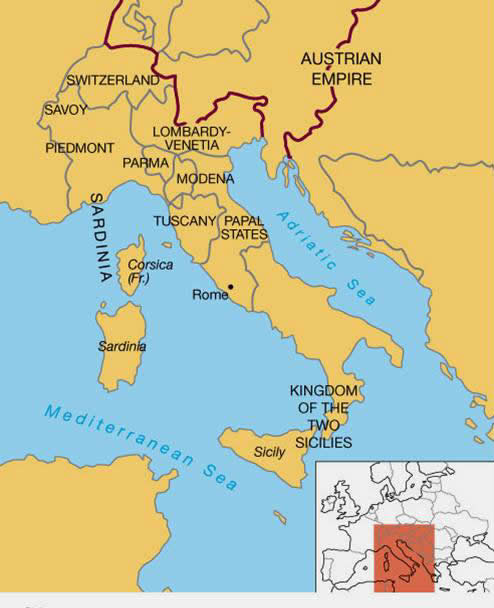 |
Italian Peninsula, 1815 |
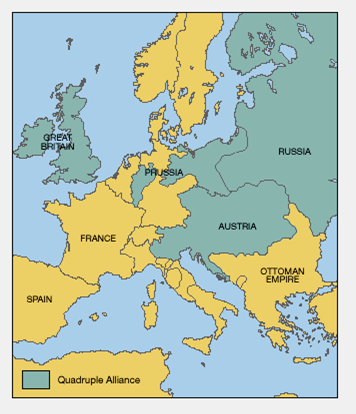 |
Quadruple Alliance; this
alliance grew out of the need of the Great Powers to create a stable
Europe, and had as its initial impulse the creation of a buffer against
a future French threat. Austria, Great Britain, Prussia, and
Russia entered into the agreement as the basis for defending the balance
of power in Europe. France would later join this group to make the
Quintuple Alliance. |
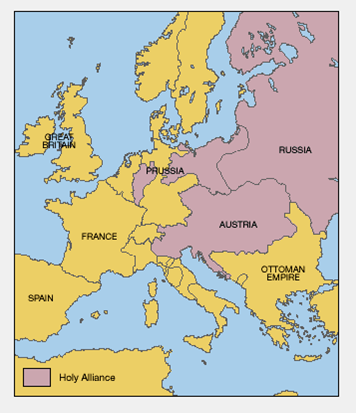 |
Holy Alliance; the Russian
Czar Alexander I, Emperor Francis I of Austria and King Frederick
William III of Prussia entered an accord to treat each other according
to the precepts of the Christian religion. As a counterweight to
the Quadruple Alliance, it served as a justification for repression
against dissent (revolts). The Holy Alliance quickly disbanded
after the death of Czar Alexander I in 1825. |

















